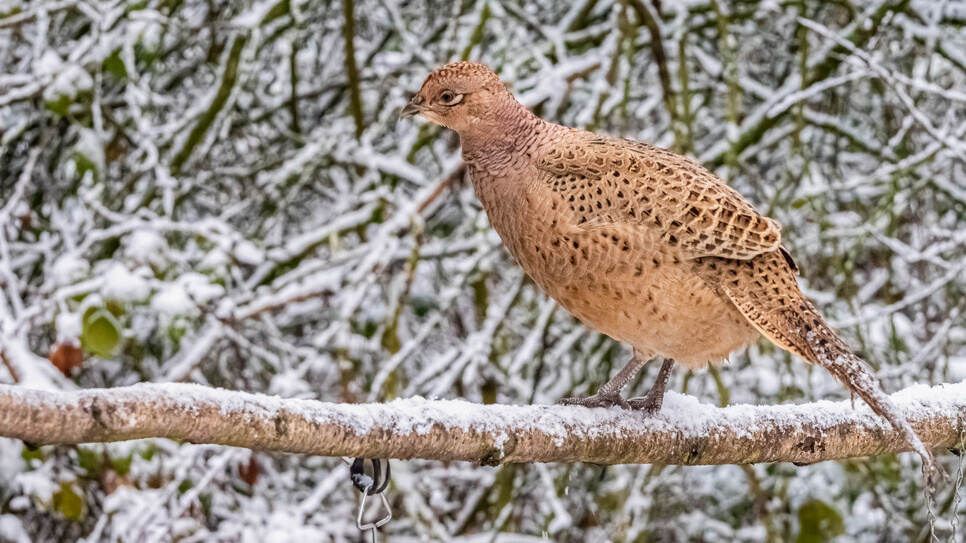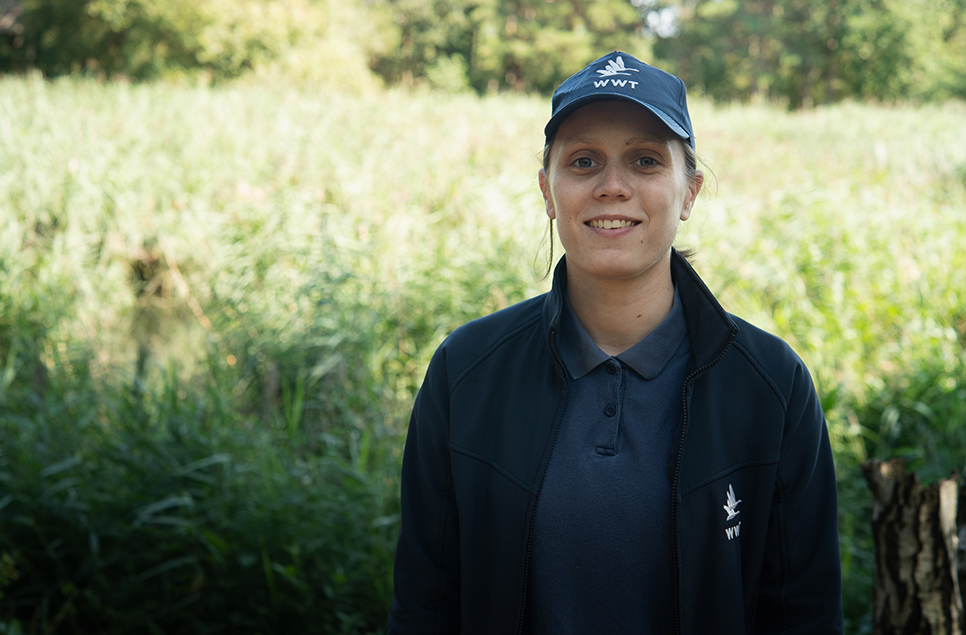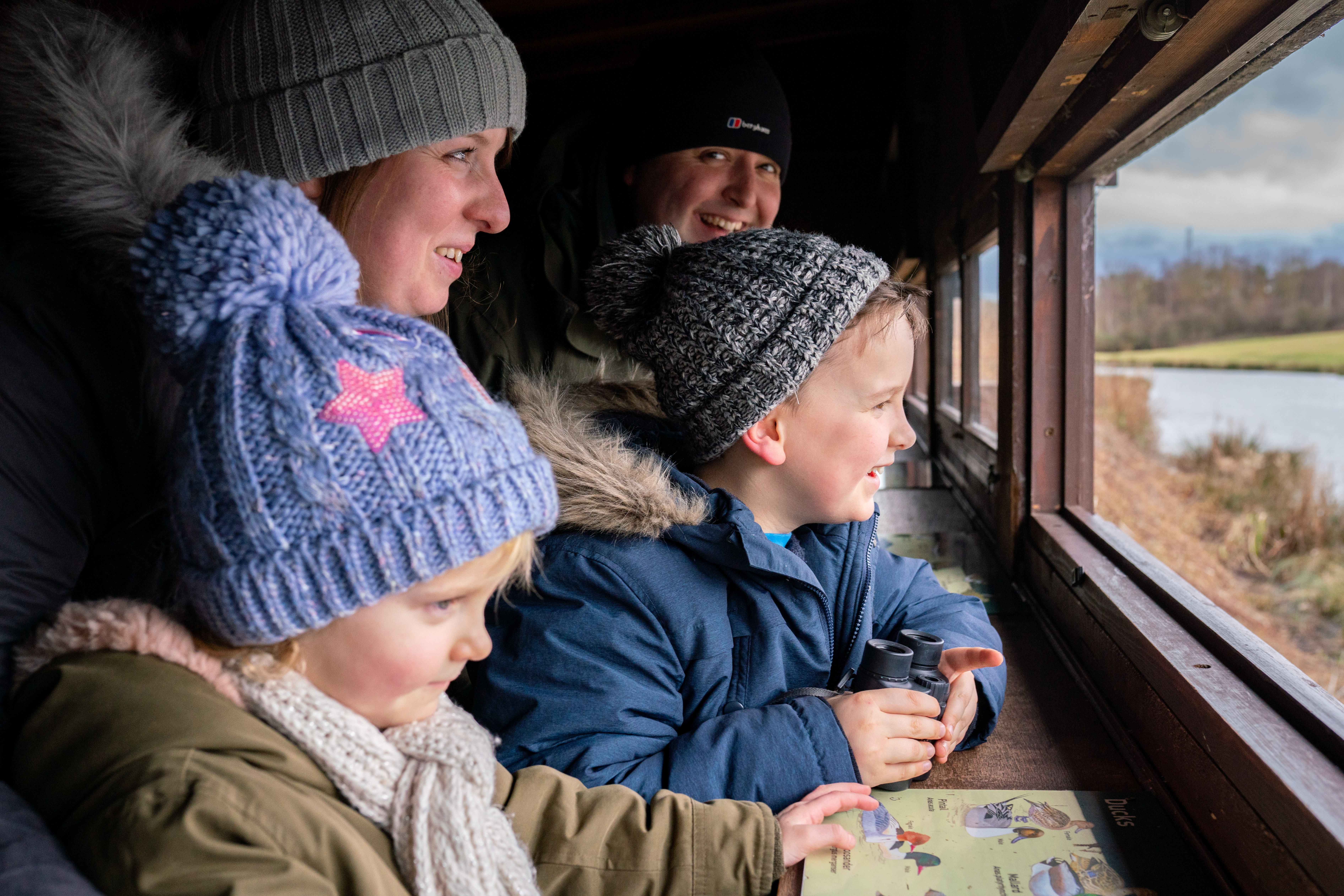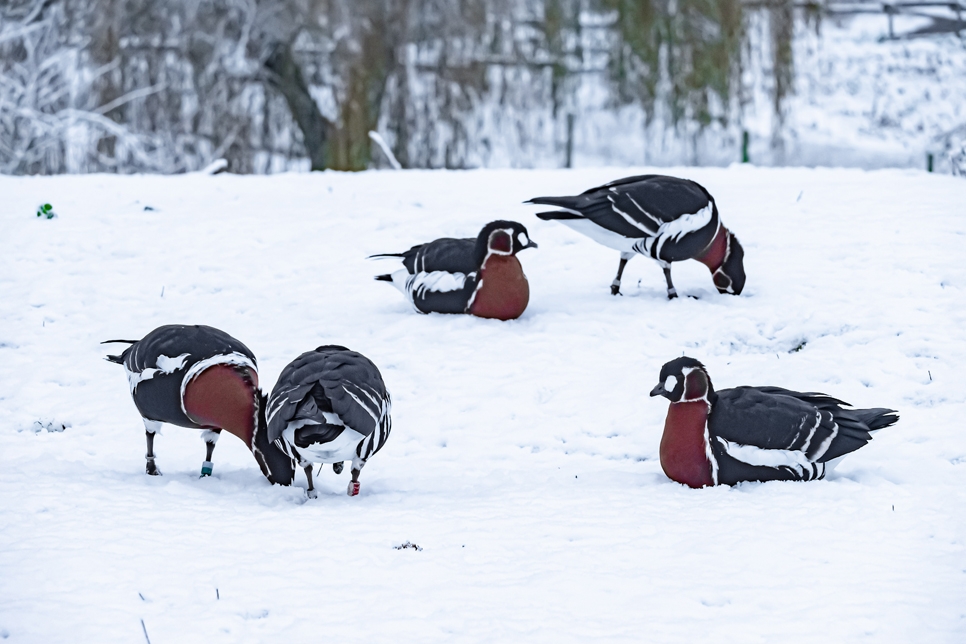Baby boom for WWT Washington's Wader Lake
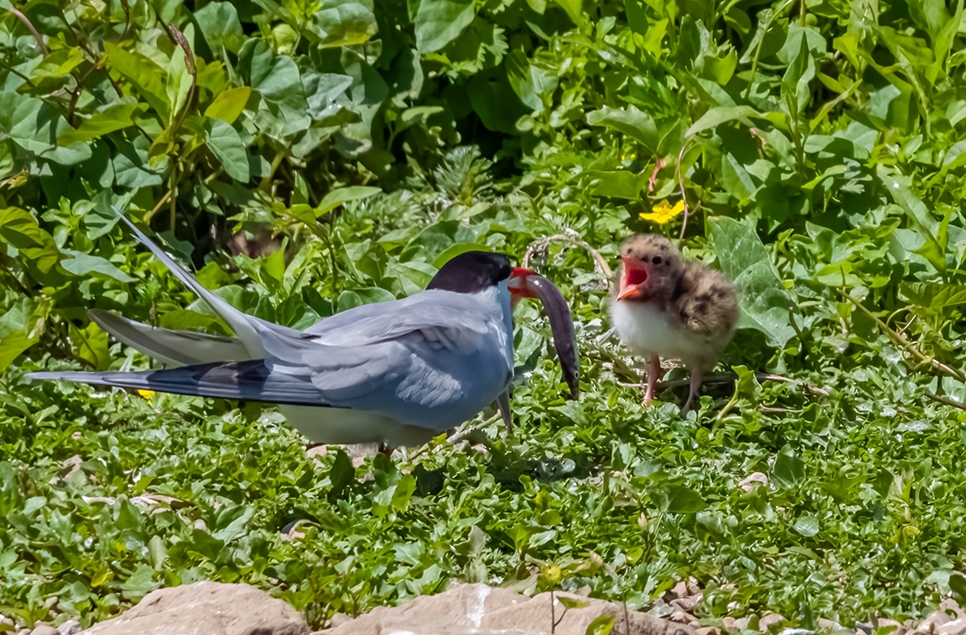
This time of year is one of favourites here at WWT Washington Wetland Centre with vibrant green leaves aplenty and flowers as far as the eye can see. On Wader Lake, the space has transformed into nature's nursery with lots of fluffy new arrivals hatching every day.
With lots of youngsters around, it's tricky to know where to focus your attention. So here's our top tips for you to keep an eye out for during your visit!
Avocet chicks
These amber-listed birds are a one to watch for and here at WWT Washington we are lucky to get one of the most northernly breeding avocet in the country. The first youngsters were spotted in mid-June, keeping mainly to the edges of the shingle island. Best viewed from Diageo hide, they can be seen wading in the shallows and testing out their long but not fully upturned beaks as they feed, with adults often staying nearby for protection.
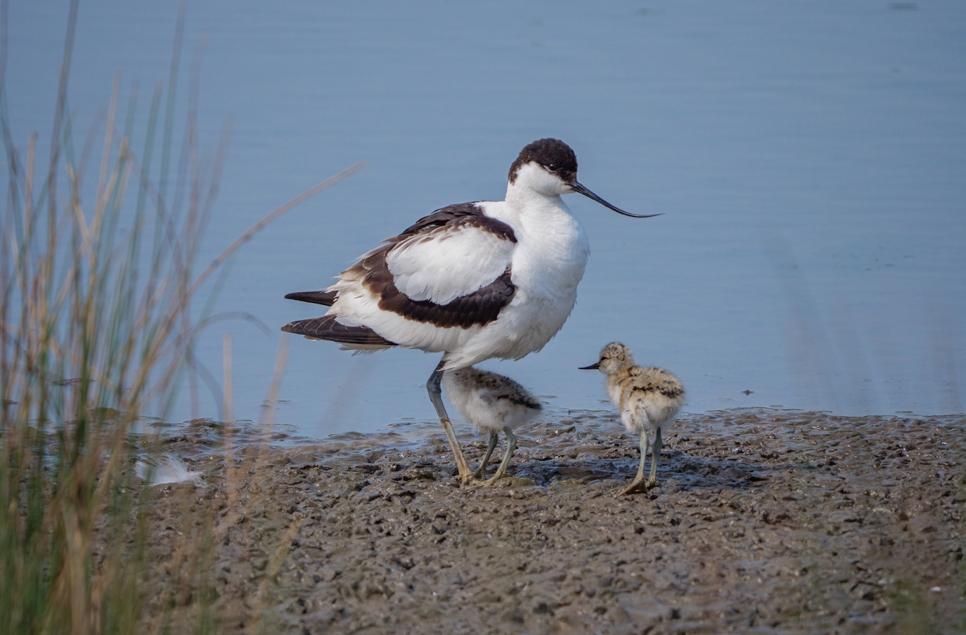
Common tern chicks
Travelling from southern Spain and West Africa, common tern arrive here in spring and make their homes for the summer on the shingle islands of Wader Lake. Their aerobatic performances and noisy displays are a treat to watch. But behind the performance is a purpose; to defend their nests and their precious young chicks. Chicks are now being spotted and can be seen on the edges of the islands, wide-mouthed and demanding food. Keep an eye for the parents as they swoop in with sand eels and other small fish ready to feed their young.
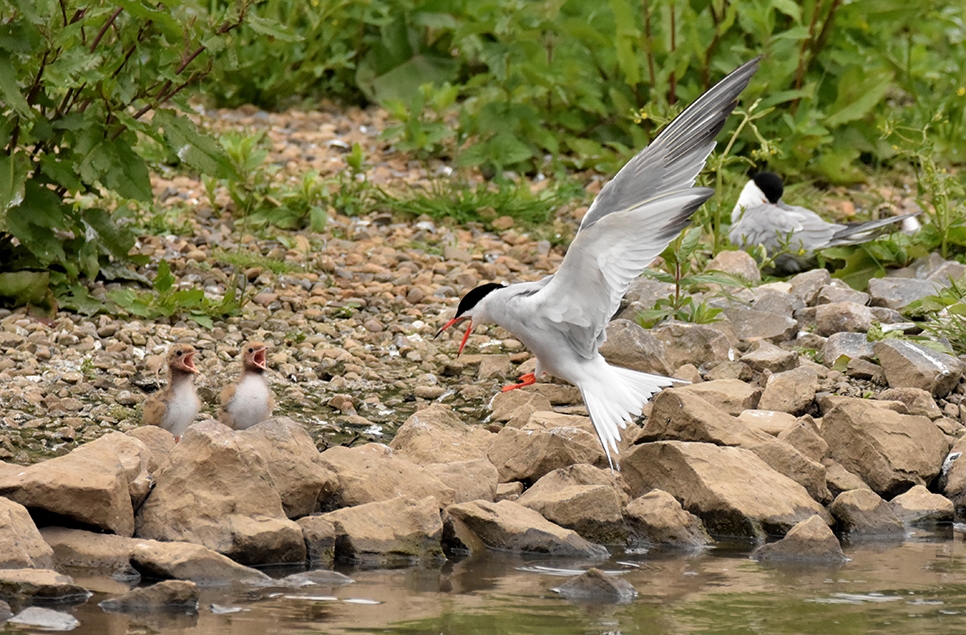
Oystercatcher chicks
Often heard before being seen, oystercatcher are a vibrant addition to Wader Lake. Their chunky bright red beaks help these birds stand out in the crowd. Youngsters can be seen as grey balls of fluff, following their parents around as they learn to wade and feed.
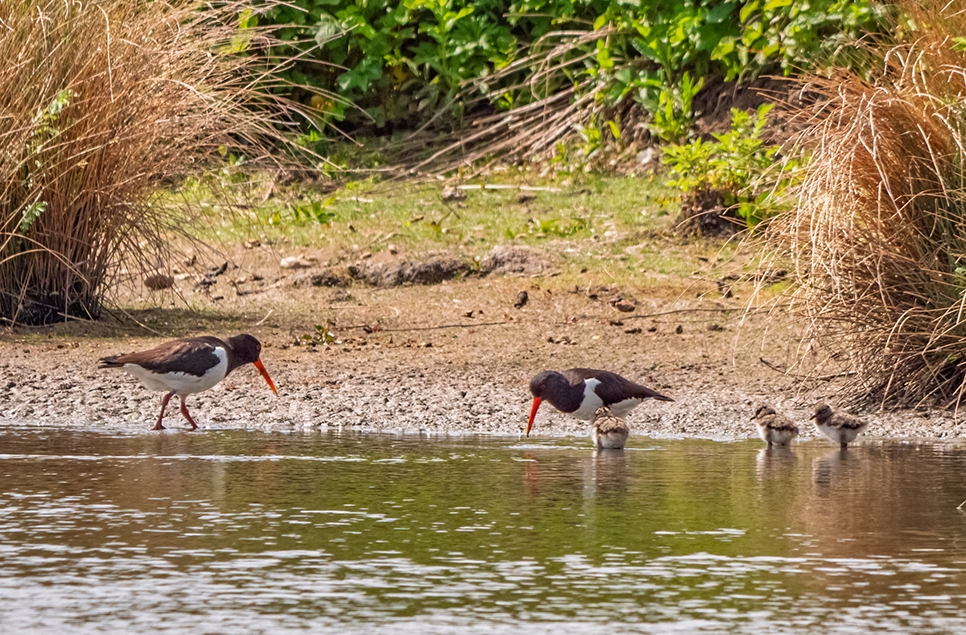
Common shelducklings
Common shelduck are versatile nesters, adapting to the lay of the land to lay their eggs, usually in haystacks or burrows dug by rabbits! They hatch in large clutches of up to 12 ducklings, often forming large 'creches' as they come together with other families. Their black and white fluffy appearance gives them the affectionate name of 'humbugs' and they can be seen all over the lake following the adults that are in charge of looking after them.
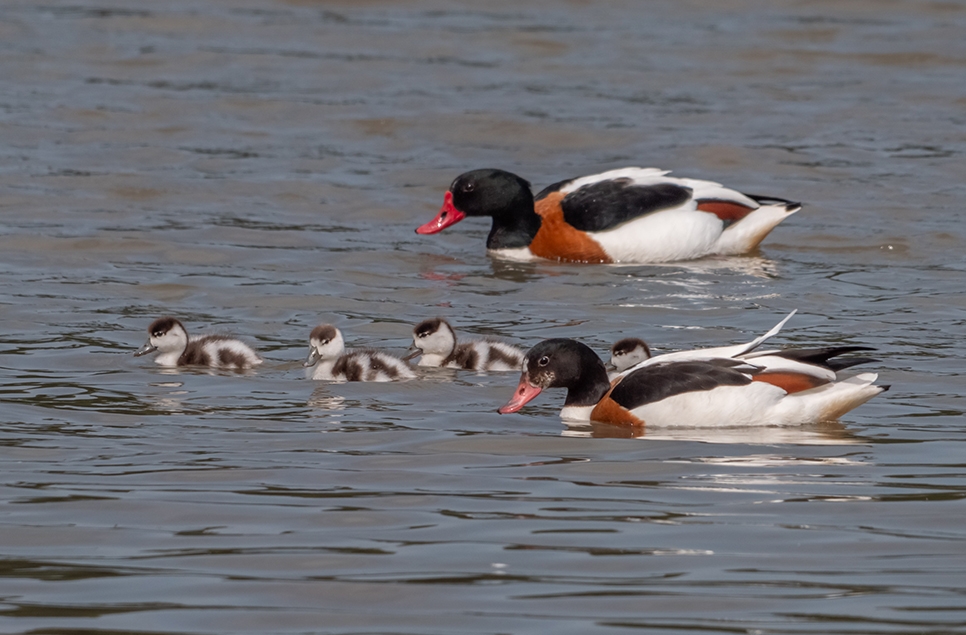
Tufted ducks
The first tufted ducklings have started to hatch on Wader Lake. These ducks are masters of diving, often trying their first dives soon after hatching! Following the example of their mother, ducklings practise their skills as they grow, developing into pros by the time they fledge at around 50 days old. Watch as they learn to commandeer the water with their siblings under the watchful eye of their grown-ups!
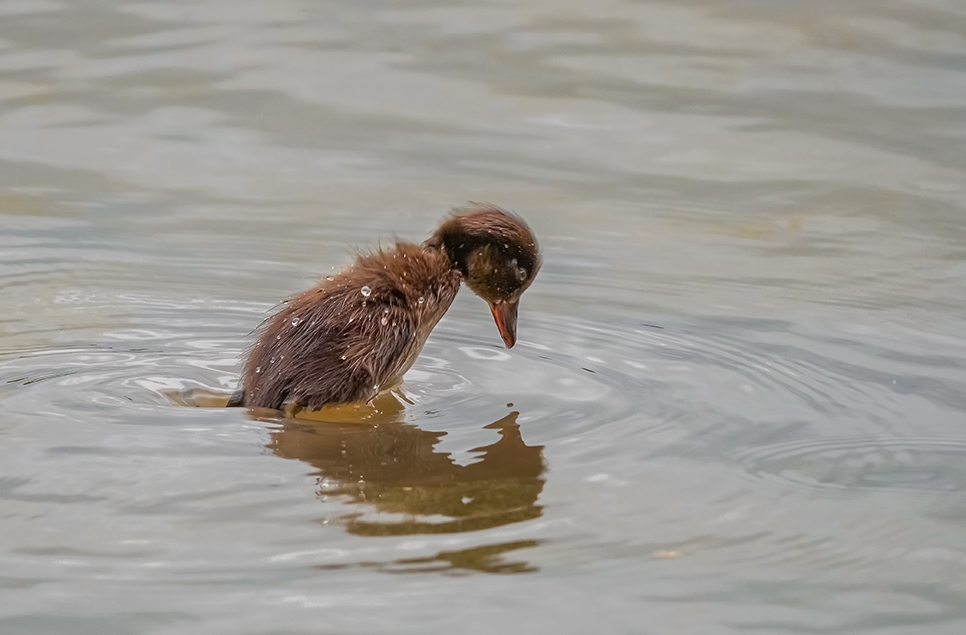
Juvenile grey heron
The earliest nesters of Wader Lake, grey herons nest in the hedges at the back of the lake, viewed nicely from Paddy Fleming and Diageo hides. These birds are mostly all fledged by the start of summer, but the juveniles can still be seen mooching around the edges of Wader Lake and staying within the vicinity of the hedges while they grown their confidence. Watch for their more fluffy, spiked hair-dos and stalking behaviour as they hone in on their hunting skills.
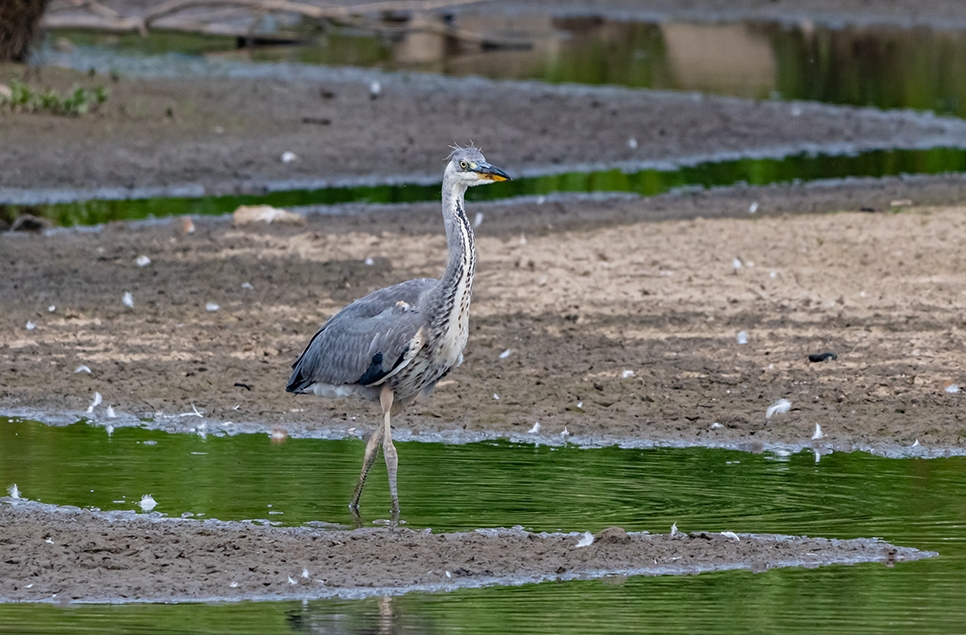
Other birds
There are lots of other birds around Wader Lake that are worth keeping an eye out for during summer. Lapwing often have youngsters on the back fingers of the lake, while spotty black-headed gull youngsters share the shingle islands with other residents. As their name suggests, tiny little-ringed plover have been spotted on the islands too, scoping and displaying.
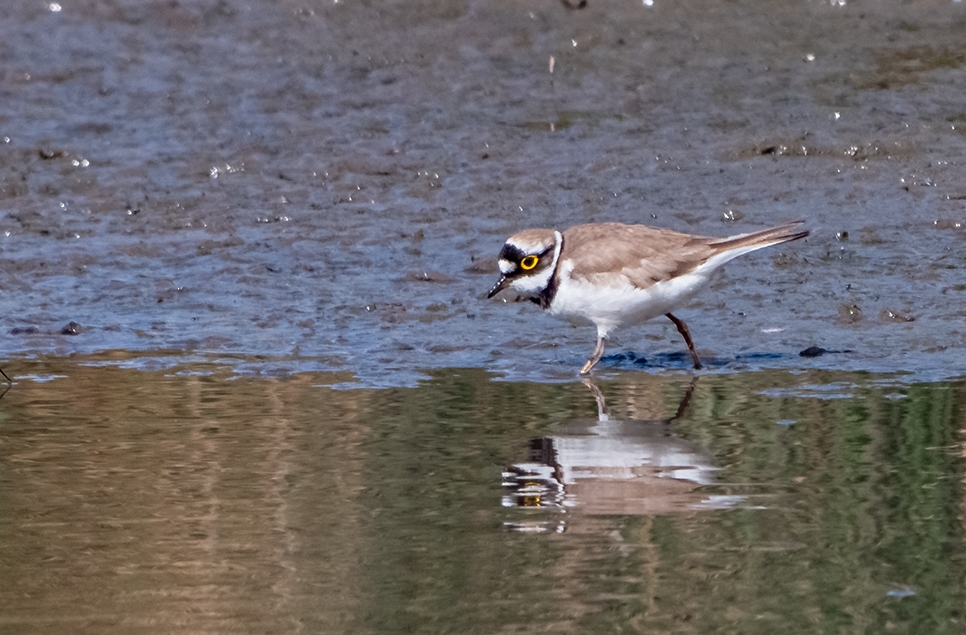
Ready to visit?
If you've been inspired to visit Washington Wetland Centre and explore Wader Lake, find out more and plan your visit online.
Plan your visit